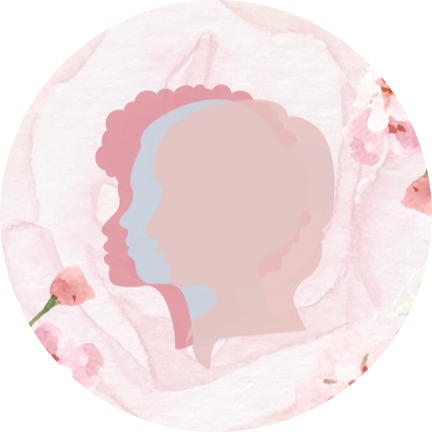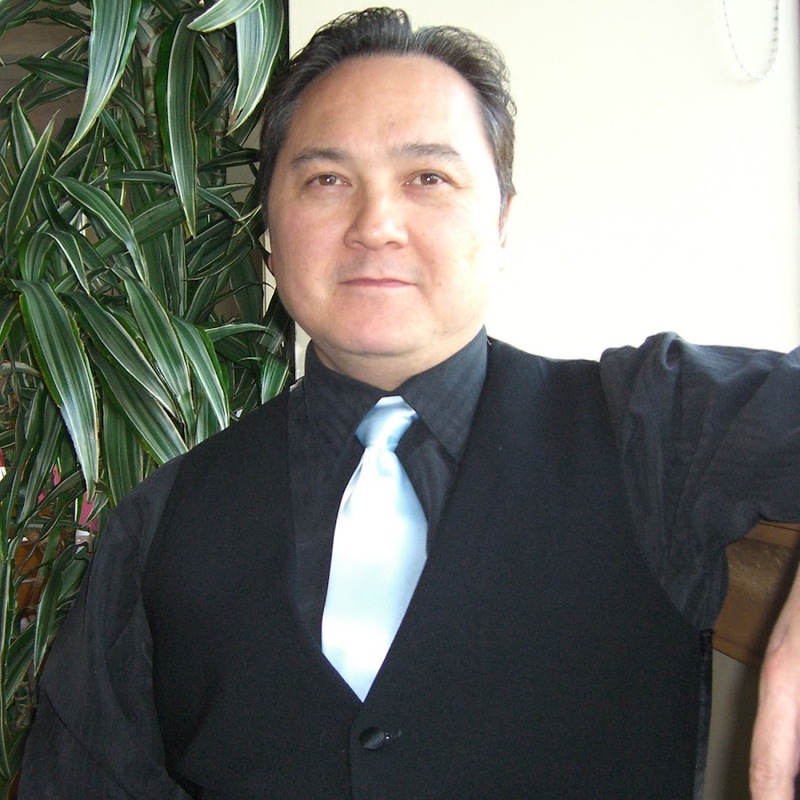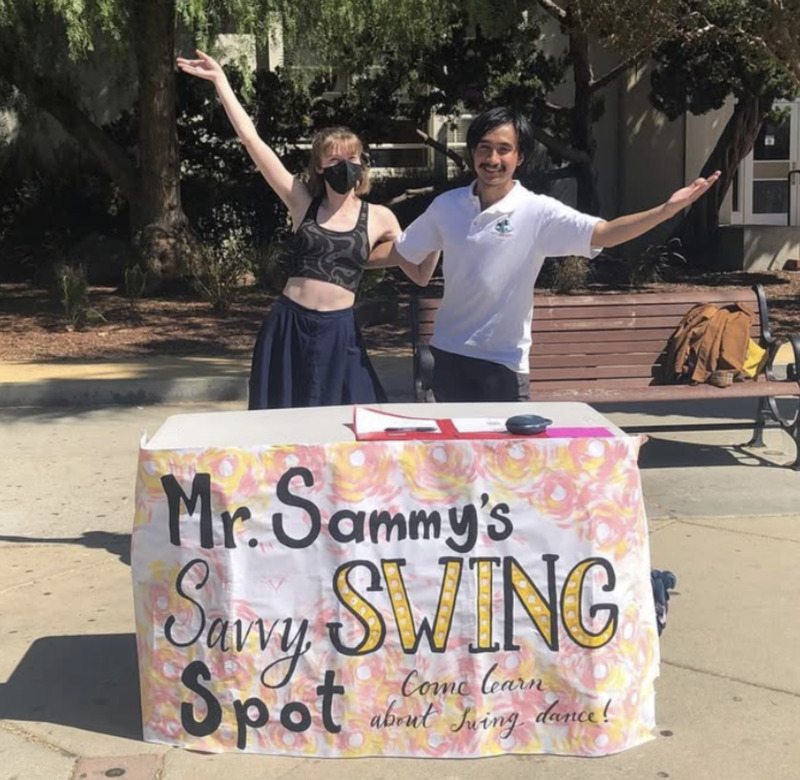Lindy Hop Interviews
These interviews were conducted by Megan Bischof, where they asked two SJSU pioneers experienced with Lindy Hop culture for their personal insights.
Interview #1: Bud Ayers
1. Teaching History & Origins of the SJSU Swing Class
Megan: How long have you been teaching swing here at SJSU?
Bud: I’ve been teaching since 2007
Megan: And the swing class itself—did it start in 2007 as well?
Bud: No, it existed before, but I took it over in 2007.
Megan: I found your Spartan Daily article from 2007 with photos of students dancing. You were 50 then—nice!
2. Lindy Hop as a Liberating Activity
Megan: Have you seen Lindy Hop culture used as a liberating activity here?
Bud: Definitely. It broke away from uptight social rules—women could dance wild, un‑ladylike, even be thrown. Beauty standards went out the window.
3. Changes in Swing Culture Over the Past 20 Years
Megan: Has the culture of swing dancing changed on campus or in the Bay Area?
Bud (Lindy Hop): Lindy hasn’t changed much—though more people add acrobatics. The problem is distinguishing performance moves (aerials) from social dancing.
Bud (West Coast Swing): WCS has evolved a lot. You can tell teachers by their signature slides, arm catches instead of hand holds, circular patterns instead of straight lines. Competitions now demand about 30% interpretive content—only basics like whip or basic remain recognizable.
4. Dancer Personality & Musical Motivation
Megan: Do personalities differ between WCS and Lindy dancers?
Bud: WCS dancers are highly creative and love interpretive freedom. Lindy dancers are driven by the music and movement—deep into swing tunes, perhaps less experimental but very passionate.
5. Class Demographics & Scheduling
Megan: Have you seen shifts in gender or ethnic makeup over time?
Bud: Today’s swing classes have more men than 20 years ago; we also see more white students overall.
Megan: What about class times?
Bud: Morning classes at 8:30 am drew only 12–18 students—sometimes forced cancellations. Moving to noon filled every session. By contrast, Latin classes stay full at any hour.
6. Off‑Campus Social Dancing Scene
Megan: Have swing opportunities declined off campus?
Bud: Yes—where swing peaked in the ’90s, venues declined partly because swing dancers don’t drink, so bars aren’t keen to host us. Mama Kin’s stopped swing nights for that reason.
7. Cultural & Historical Terminology
Megan: What’s the difference between “Jitterbug” and “Lindy Hop”?
Bud: They’re essentially the same. Historically, “Lindy Hop” was the Black‑origin term; white communities called it “Jitterbug.”
Megan: And “boogie‑woogie”?
Bud: A related style, less commonly understood.
8. Roots & Cross‑Cultural Influences
Megan: How did tap and swing emerge?
Bud: Irish step dancing influenced early tap through shared poverty contexts. African banjo rhythms and call‑and‑response shaped jazz, which led to swing.
9. Music & Future of Swing
Megan: Is there enough new swing music today?
Bud: No—Brian Setzer, Squirrel Nut Zippers, Big Bad Voodoo Daddy brought fresh tunes in the ’90s. Now, Postmodern Jukebox does modern covers, but original swing songs are scarce.
Megan: Do you think swing will resurge?
Bud: Possibly when people feel comfortable with close contact again. American individualism and personal‑space norms slow that, unlike Latin dances which thrive on closeness.
10. Respect, Boundaries & Safety
Megan: How do you handle disrespectful or predatory dancers?
Bud: I step in immediately if someone makes others uncomfortable. Women often ask for help. It takes one voice to break the silence and drive change.
11. Alumni Achievements
Megan: Are there any past students who’ve gone on to do even bigger things than Ian? I know I’m talking to Ian, but I’m curious—has anyone gone further in swing?
Bud: Some moved on to ballroom dancing. There was one who really got into West Coast Swing and even started a swing club. I’m not sure what she’s doing with it now, but I know a lot of West Coast swingers are still active in the scene.
12. Lindy Hop’s Current Visibility
Megan: Oh, okay. Lindy’s a little more… fading?
Bud: It’s not so much fading as moving into a different world. I don’t see it much in the Friday Night Waltz—they do Lindy there, but it’s not my scene.
13. Cycles in Swing Popularity
Megan: Can you speak to any gaps in swing dancing over time? It was huge in the ’90s—where did it go after that?
Bud: Swing boomed in the ’90s, then faded. But it moves in ten‑year cycles: after the 2000s lull, it surged again around 2008. Every decade seems to have its own swing wave.
14. Latin Dancing vs. Swing
Megan: Do you think Latin dancing is more popular now than 20 years ago?
Bud: Latin dance never really went away—it’s always been popular. It’s cultural: celebrating life and community. Lindy celebrates life too but isn’t as deeply embedded here. Americans focus on hard work and personal space; Latin cultures focus on togetherness. Look at Brazilians—they know how to party.
Megan: I remember being at Alberto’s and hearing about Cuban Latin dancing—it’s insanely vibrant when they go down low.
Bud: Absolutely. Cuban Latin dancing is unique—full of energy and flair.
15. Swing Community Norms
Bud: There was a live show called “Swing.” Did you know about it?
Megan: Yes—it was built around clapping on two and four (the off‑beats). In swing, we clap on two and four rather than one and three—that distinction matters in our community.
Bud: I’m a musician, so I get it. Without feedback, dancers don’t know how to improve. Hand placement is another common issue—they often aren’t aware of where their hands are.
Megan: Exactly. Guidance on hands and frame makes all the difference.
16. Music & the Future of Swing
Bud: Is there enough new music in swing today?
Megan: No—Brian Setzer, Squirrel Nut Zippers, Big Bad Voodoo Daddy brought fresh tunes in the ’90s. Now Postmodern Jukebox does great covers, but original swing songs are scarce. We need more new music to keep swing alive. Do you think swing will come back?
Bud: Possibly when people get comfortable with close contact again. American norms around personal space slow that, unlike Latin dances, which thrive on closeness.
17. Dance Styles & Boundaries
Megan: Do you think Zouk dancing is similar?
Bud: I don’t teach Zouk—it’s too close for comfort. I emphasize respect and boundaries: it’s fine for couples who are comfortable, but I don’t encourage it otherwise.
18. Safety & Respect in the Community
Megan: What about guys in the swing club who aren’t respectful?
Bud: If someone makes others uncomfortable, I step in. Women often ask me to help. It only takes one voice to break silence and drive change—otherwise the behavior continues.
Interview #2: Ian Millado
1. Years Active in the Swing Community
Megan: What years were you active in swing dancing on campus?
Ian: I first took swing in Fall 2022—my junior year. From Fall ’22 through the end of that academic year, I was pretty consistent: weekly swing events. By the last semester of senior year, I started taking occasional breaks for life stuff (including a breakup). All told, it’s been roughly two years of regular participation.
2. Consistency & Recent Breaks
Megan: You mentioned breaks—how often are you dancing now?
Ian: Lately I’ve been taking more breaks—life got busy. But I’m trying to get back into the group as much as possible.
3. Pandemic’s Impact & Community Recovery
Megan: How has the swing community changed since you started?
Ian: When I began in 2022–23, social dancing was just coming back from COVID lockdowns—attendance was low. Now, COVID’s largely over, and we’ve seen a rebound. West Coast Swing (WCS) in particular has exploded: there are at least three weekly WCS socials in the South Bay, so you can get your swing fix almost any night. Lindy Hop’s recovered too, but WCS is definitely the hotter scene right now.
4. Evolving Pedagogy
Megan: Have teaching methods shifted?
Ian: Absolutely. Back in Fall ’22, Wednesday Night Hop had a single “Beginners + Concepts” class plus one elective. Now they’ve split into full levels—Beginner, Fundamentals, Intermediate, and even Audition tracks. The structure is much more formalized, and there’s real effort among instructors to expand Lindy Hop pedagogy.
5. Race & Gender Context in the Bay Area
Megan: What changes have you seen around race and gender?
Ian: The Bay Area Lindy community is very socially conscious. For example, at Camp Hollywood there was a two‑day workshop led by a queer instructor who avoided “leader/follower” labels—he used “rocking on left foot” vs. “rocking on right foot” to neutralize gender roles in the dance. It was revolutionary for our scene.
6. Switch Dancing & Role‑Swapping
Megan: Do people still switch roles?
Ian: Yes—switching is normalized. It’s commonplace for anyone to lead or follow, regardless of gender. That inclusivity is core to our Bay Area identity, even if other regions might view a man following as unusual.
7. Safe Spaces & Harassment Policies
Megan: How do venues handle harassment?
Ian: Wednesday Night Hop organizers take reports of harassment extremely seriously—any incident, they intervene immediately. That commitment to safety and inclusivity makes our scene unique.
8. Demographics & Diversity
Megan: How diverse is the scene?
Ian: South of Oakland, it’s still predominantly white; Bay Area scenes in Oakland and San Francisco are more racially mixed. Lindy Hop dancers here tend to be historically conscious—you’ll often hear tributes to Frankie Manning at hops. WCS, by contrast, traces back to predominantly white ballroom roots.
9. Anecdote: Camp Hollywood Elevator
Megan: Any memorable cultural moments?
Ian: At Camp Hollywood, I was in an elevator with two competitors locked into “dance‑sports” focus and a third dancer who vibed to my loose rhythm. He playfully told the stiff competitors, “Lighten up, guys!” It highlighted the contrast between competition mode and social dance spirit.
10. What Drew You to Swing
Megan: Was it the music, movement, or community that drew you in?
Ian: Definitely the music. I was in Humanities Honors and attended a lecture on African American music history—from jazz’s roots to modern hip hop. That sparked my curiosity when I saw “Beginning Swing” listed as a music‑related course. Swing to me is “old‑school clubbing”—good music, self‑expression, fun, and meeting people, much like a USO dance for sailors on leave.



